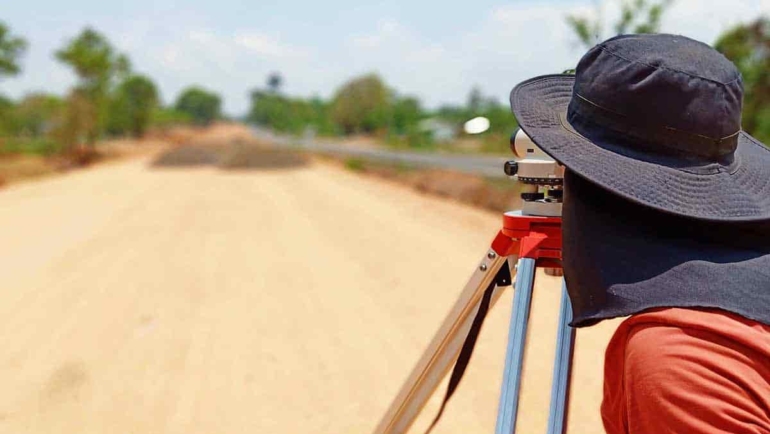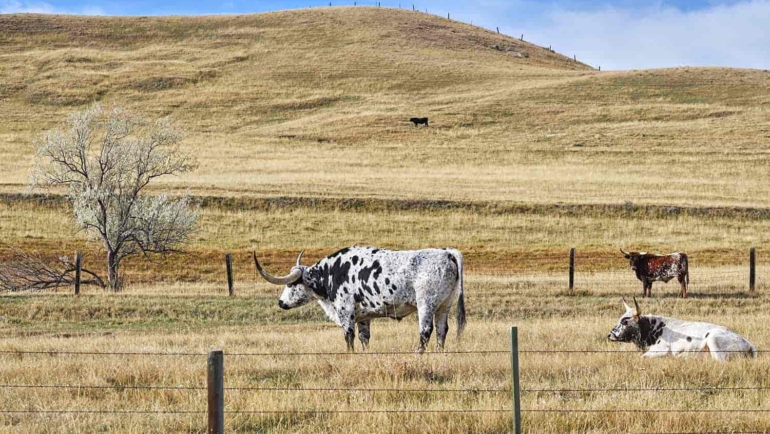Many buyers search for weeks, months, or even years to find a home or commercial structure that will fit their needs, and some people find that the best solution is to just purchase land and develop it into the perfect residential or commercial site instead! However, most people do not have the funds to purchase land outright, which is where a land loan comes into play.
Below, we’ll discuss the specifics of getting a land loan, as well as the differences between the three types of loans listed above. Keep reading to learn all of the information you will need to make your final decision and begin your new project!
Article Contents
What Kind of Loan is Used to Buy Land?
There are many different kinds of loans that buyers use to purchase land, but the three main types are:
- Raw land loans
- Undeveloped land loans
- Developed land loans
Different options are better for different buyers, and you must take several factors into account when making your decision.
The loans that are used to buy land are similar to those that people use to purchase a home. While they are very similar, land loans typically require a better credit score, a higher down payment, and a higher rate of interest than mortgage loans. They also typically need to be paid back in a shorter period of time than the traditional 30-year mortgage.
The type of loan you’ll need to be approved for to buy land depends on the type of land you’re interested in. Depending on this, you may need to get a raw land loan, an unimproved land loan, or an improved land loan.
Do All Banks Have Loans for Land Sales?
Because people typically do not purchase land as often as they purchase existing homes and commercial buildings, land loans are not as common as mortgage loans. You may have to do some searching to find a bank that will give you a loan in order to purchase land, which means you have fewer options and there is less competition between lenders.
The lack of competition in this area means that banks and lenders usually have the upper hand in the transaction. This is a big part of why you should expect to pay a higher down payment and more interest on a land loan. You should also be prepared to pay off the loan in a shorter period of time, because banks typically view land loans as a greater risk to their business than mortgage loans.
While you may not find as many banks offering land loans as those that offer mortgage and other home loans, it’s still important to shop around and consider all of your options. While almost all banks will require a better credit score and more money down, some lenders will be more willing to work with you than others.
3 Types of Loans for Buying Land
 There are many different kinds of loans available for people who want to purchase land, and the main differentiation comes from what type of land you’re looking to purchase. You might be considering raw land, unimproved land, or improved land, and these three different types of land will greatly influence what type of loan you’ll need to get.
There are many different kinds of loans available for people who want to purchase land, and the main differentiation comes from what type of land you’re looking to purchase. You might be considering raw land, unimproved land, or improved land, and these three different types of land will greatly influence what type of loan you’ll need to get.
Raw Land Loans
Raw land is land that is completely untouched by man, so it does not include any connections to utilities, such as:
- Electricity
- Sewers
- Roads
Because this land is completely uncultivated, it can be used for almost anything, as long as the soil type and zoning laws allow for it. Some buyers prefer this, because they are able to purchase the land and then choose what they’d like to use it for, whether it’s residential, recreational, farming, or commercial use.
While raw land was not a popular choice for buyers in the past, landowners have become more aware of its benefits in recent years. It’s no secret that, especially in the United States, raw, untouched land is a scarcity. Even if you don’t have any immediate plans for the land, this factor alone will cause your purchase to increase in value over time. If you do choose to develop it in any way, this will only increase the value of the land more.
Raw land itself may be cheaper to purchase than developed or developing land, but it can be more difficult to get financing for. This is because many lenders view it as a higher risk. Before applying for financing, make sure to draw up a detailed outline for how you plan to use the land. This will show banks that you are committed to the project you’re purchasing the land for, which shows that you don’t pose as big of a risk as people who are underprepared.
Another way to increase your chances of qualifying for a raw land loan is to offer a larger down payment than what’s required and show an excellent credit history. While both a large down payment and good credit history are necessary for procuring any kind of land loan, showing your lender that you have more to offer than others will help increase your chances of approval, especially in the case of raw land.
Unimproved Land Loans
Unimproved land is somewhat similar to raw land, which makes differentiating between the two difficult for some people. Here’s a tip: ask yourself a few questions.
- Are there roads leading to the land?
- Has it been cleared of some trees and other plants?
- Is it connected to any sewer lines?
If you answered “yes” to any of those questions, chances are, you’re dealing with unimproved land rather than raw land.
While unimproved land is not completely developed, it is also not untouched by man. There may be some utility hookups and amenities already installed, but it typically lacks a connection to the electrical grid, phone lines, and natural gas hookups. Unimproved land, by definition, is typically a large, open patch of land that is in the very early stages of development.
Unimproved land may have soil or terrain that’s already been cultivated in one way or another, so you may be limited in terms of what you’re able to use it for. For example, land that has been cultivated for commercial use may not be appropriate for farming! While it is possible in some cases to change this, it may be very expensive to do so. When you’re looking to purchase a plot of land, always make sure you know if and what it’s been cultivated for in the past so you can take this into consideration before making a final decision.
While most lenders do not consider unimproved land loans to be as risky as raw land loans, they can still be quite difficult for buyers to obtain. Always make sure to go into your meeting with a detailed plan for how you’ll use the land, a larger down payment than what’s required, and a very strong credit score to increase your chances of approval.
Improved Land Loans
Improved land is the easiest type of land to build on, because it’s already been developed in certain ways and is usually connected to utilities and amenities, such as roads, the electrical grid, and a water source. It can be used for a variety of purposes, depending on what the land is zoned for, including:
- Residential purposes
- Farming
- Recreational purposes
- Commercial purposes
Zoning laws are the downside of purchasing improved land. These laws dictate what can and cannot be built on the land and how these structures can be used, so you’ll need to check all the relevant regulations before deciding to purchase the land for a specific purpose.
Improved land, as you may expect, is the most expensive kind of land to purchase. This is because it is the most developed of the three types of land, so the improvement-making process is less cost-prohibitive and there is a higher earning potential for the buyer. However, you may be glad to hear that interest rates for this type of land, while still high, are lower than interest rates for the other types of land.
It’s still important to go into your meeting with a plan for how you’ll use the land, as well as a significant down payment and a high credit score. Luckily, it’s easiest for buyers to qualify for this type of loan.
How is Buying Land Different Than Buying a Home?
Purchasing land is similar to buying a house in many ways, and a land loan is obtained through the same process as obtaining a mortgage. However, buying land is still significantly different than buying an existing home.
For example, it’s often difficult for lenders to determine exactly how much land is worth. Because of this, lenders often view land loans as riskier than home loans, which is why they often require higher down payments and interest rates. If you’re looking for a lower-than-average interest rate on your loan, make sure to get your credit score as high as possible, you have enough saved up to make a substantial down payment, and that your debt-to-income ratio is relatively low.
While you don’t typically have to “sell your story” when applying for a home mortgage, you will need to go into your land loan meeting ready to explain your intended use of the land. If the lender finds your plan feasible, they’re more likely to approve the loan. If they find your plan risky, however, they may be less apt to do so.
You should also be prepared with knowledge and background on the land you’re looking to get a loan for. Make sure you’re familiar with:
- Zoning laws
- Land use restrictions
- Land boundaries established by a surveying company
- Any access to utilities that the land already has
When you can show that you’re familiar with the good, the bad, and the ugly about a property, the lender will be more confident in approving the loan.
Final Thoughts
When you can’t find an existing structure or home that fits all of your unique needs, you may consider turning to a land purchase. Financing land is similar to financing a home or existing commercial building, but it comes with a range of challenges that you need to have the expertise and financial capital to deal with.
Before you go into your meeting, make sure to learn as much as possible about the type of land you’re purchasing and the kind of loan you’ll need to secure. As long as you are able to tackle the challenges, you’ll surely reap the benefits!




